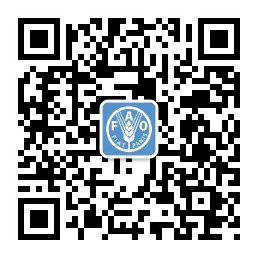AIMS Team leads the CFS46 Side Event: Information 4 Innovation in Food Security and Agriculture

Information 4 Innovation in Food Security and Agriculture. Partnering to Enhance Online Access to Research and Open Data for Development

During the 46th Committee on World Food Security (CFS), AIMS Team will lead a side event titled "Information 4 Innovation in Food Security and Agriculture. Partnering to Enhance Online Access to Research and Open Data for Development". Access to research and publication of data are vital resources for food security and nutrition, driven by farmers, farmer organisations, researchers, extension experts, policy makers, governments, and other private sector and civil-society stakeholders participating in "innovation systems" and along value chains. Lack of institutional, national and international policies and openness of data limit the effectiveness of agricultural and nutritional data from research and innovation. This is why FAO has been promoting the exchange of scientific and technical information related to all aspects of agriculture since the early 1970s.
Moving from paper to digital and from processing to partnerships, FAO has established a series of programmes to support these efforts with the objective to make information about agriculture and nutrition available, accessible and usable. These include initiatives in the higher education sector – a critical frontline in improving the development environment in lower income countries – and access to agricultural research through online platforms to facilitate innovation transfer and to assure the generation of new ideas, products and services worldwide.
Data also plays a key role in World Food Programme's work, especially in informing where and when life-saving humanitarian assistance should be delivered. In this regard, near real-time information on the food security situation is key. However, this data may not always be available on a regular basis especially in hard-to-reach areas. To bridge this gap, WFP is developing predictive analytics solutions to estimate food insecurity in places where limited data is available. The first prototype was built in 2017 by Nielsen data scientists who used WFP data to create a model to predict monthly changes in food security in Yemen and Nigeria. Today WFP is scaling these solutions and a global predictive model has been developed with Alibaba Cloud.
This side-event will provide an overview of the current initiatives supported by FAO and WFP through public and private sector partnerships on promoting access and exchange of knowledge and information – as a critical step to achieving the Sustainable Development Goals (SDGs) – and the importance of this data to enable innovations, such as predictive analytics to better inform humanitarian decision making.
Programme of the event
Presentation | Lead |
Welcome and introduction | Imma Subirats, FAO Anwen Chung, WFP |
Information 4 Innovation in Food Security and Agriculture: Partnering to Enhance Digital Access to Research and Open Data for Development An overview of the current programmes and services provided by FAO to support the exchange of digital information, knowledge and data in food security and nutrition. | Imma Subirats, FAO |
Working in partnership to develop the data ecosystem through capacity building to support smallholder agriculture in Africa, the Caribbean and the Pacific An overview about CTA and FAO collaboration in developing and delivering online training activities for developing skills in data management supporting agriculture with a particular focus on smallholders. | Chris Addison, Technical Centre for Agricultural and Rural Cooperation ACP-EU (CTA) |
Information support to Food Security and Nutrition in Uganda: The role of FAO An overview of some key aspects relating to Uganda’s profile, with a focus on the extent to which FAO has supported research and academics in Uganda and particularly at Makerere University. | Onan Mulumba, Makerere University, Uganda |
Predictive Analytics 4 Innovation in Food Security Monitoring An overview of how WFP’s food security monitoring approaches have evolved: From traditional data collection to mobile surveys to real-time monitoring to predictive analytics (setting the stage for the next two presentations) | Anwen Chung, WFP |
Prototyping a predictive model in Yemen and Nigeria An overview of the Nielsen skills-based volunteering project resulting in a predictive model for Food Consumption Scores (FCS) in Yemen and Nigeria | Sarah Cummings, Nielsen & The Demand Institute |
Hunger Map LIVE: An interactive demonstration of WFP’s new global hunger monitoring system Showcasing WFP’s new global hunger monitoring system that provides near real-time information on food security and related metrices in over 90 countries | Vladimir Tsaganov, Alibaba Cloud and Anwen Chung, WFP |
Q&A and wrap up | |
Expected outcomes
- Opportunity for an open debate on the related challenges and gaps, and on how humanitarian, academic and private sector stakeholders can work together to find shared solutions.
- Increased awareness and understanding of achievements accomplished by UN in this context;
- Improved recognition of the importance of access to and usage of reliable agricultural information resources as a central building block for improving research and education;
- Recognition on the need for recommended regional/national mechanisms to support national institutions to sustain their access to, and use of, Research4Life resources.
- Information about the most recent advances in real-time food security monitoring brought about by the integration of machine learning-driven solutions.

